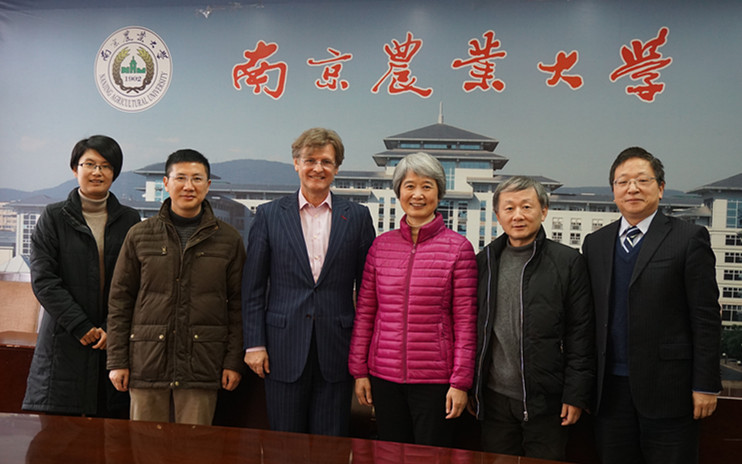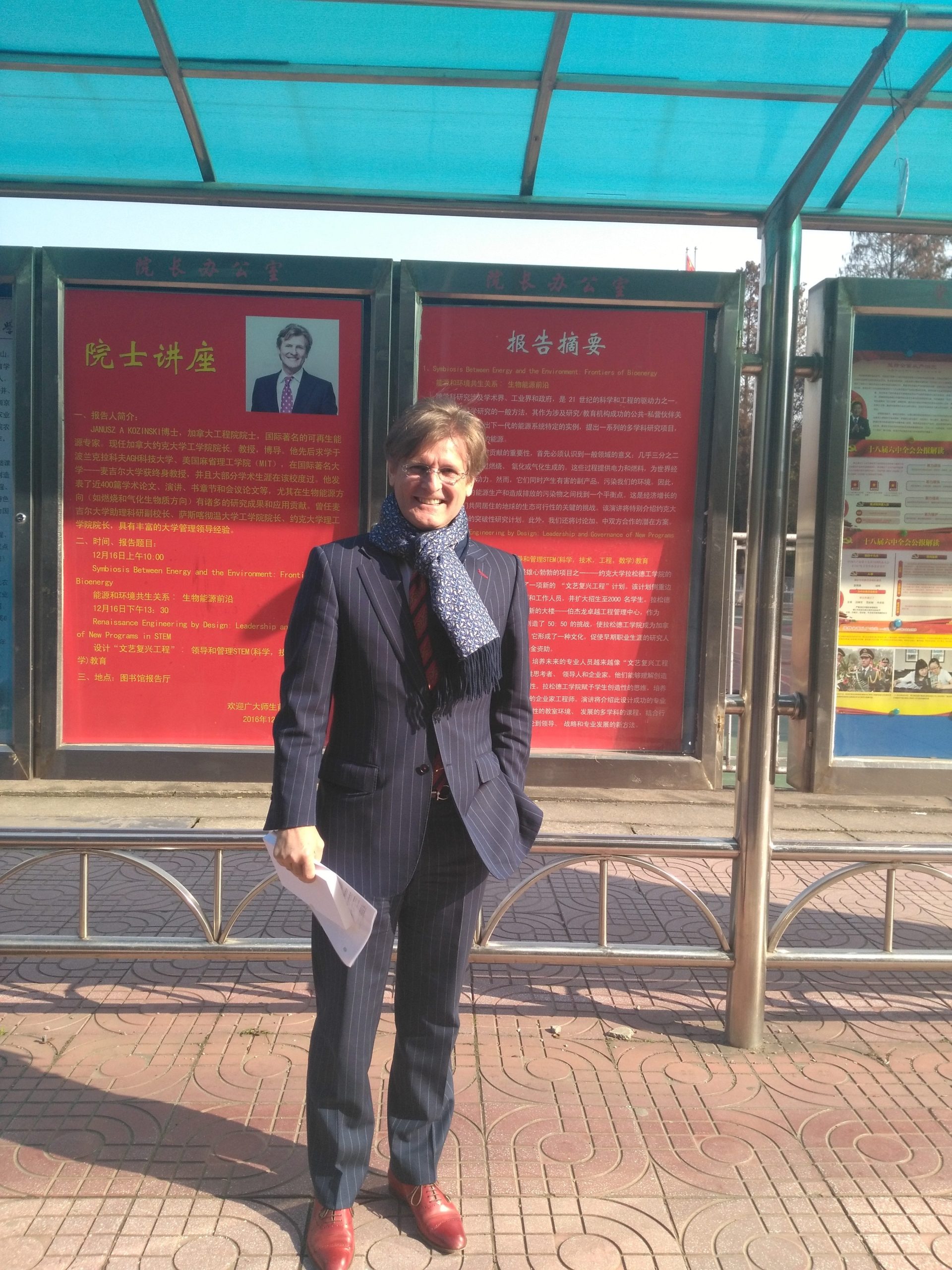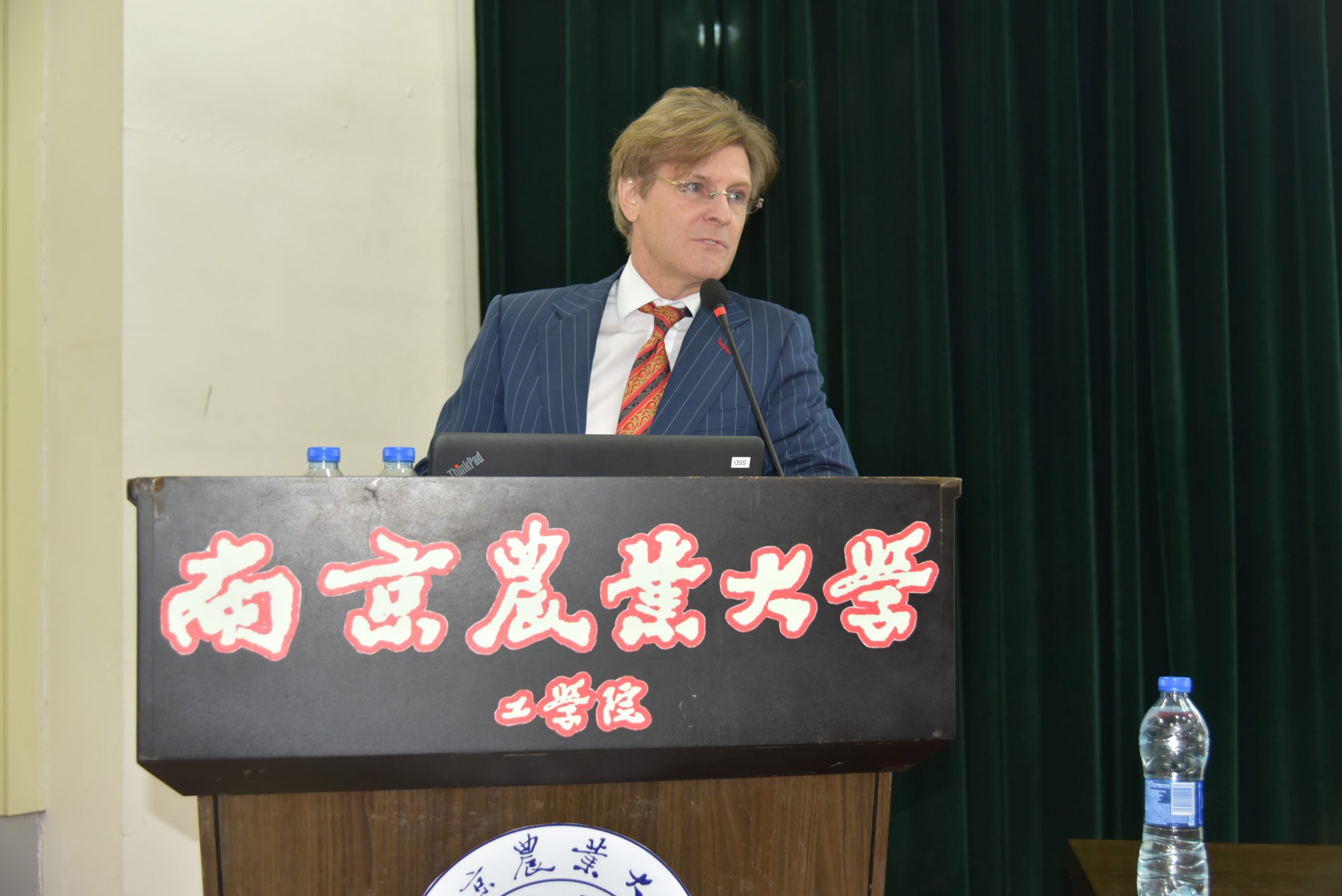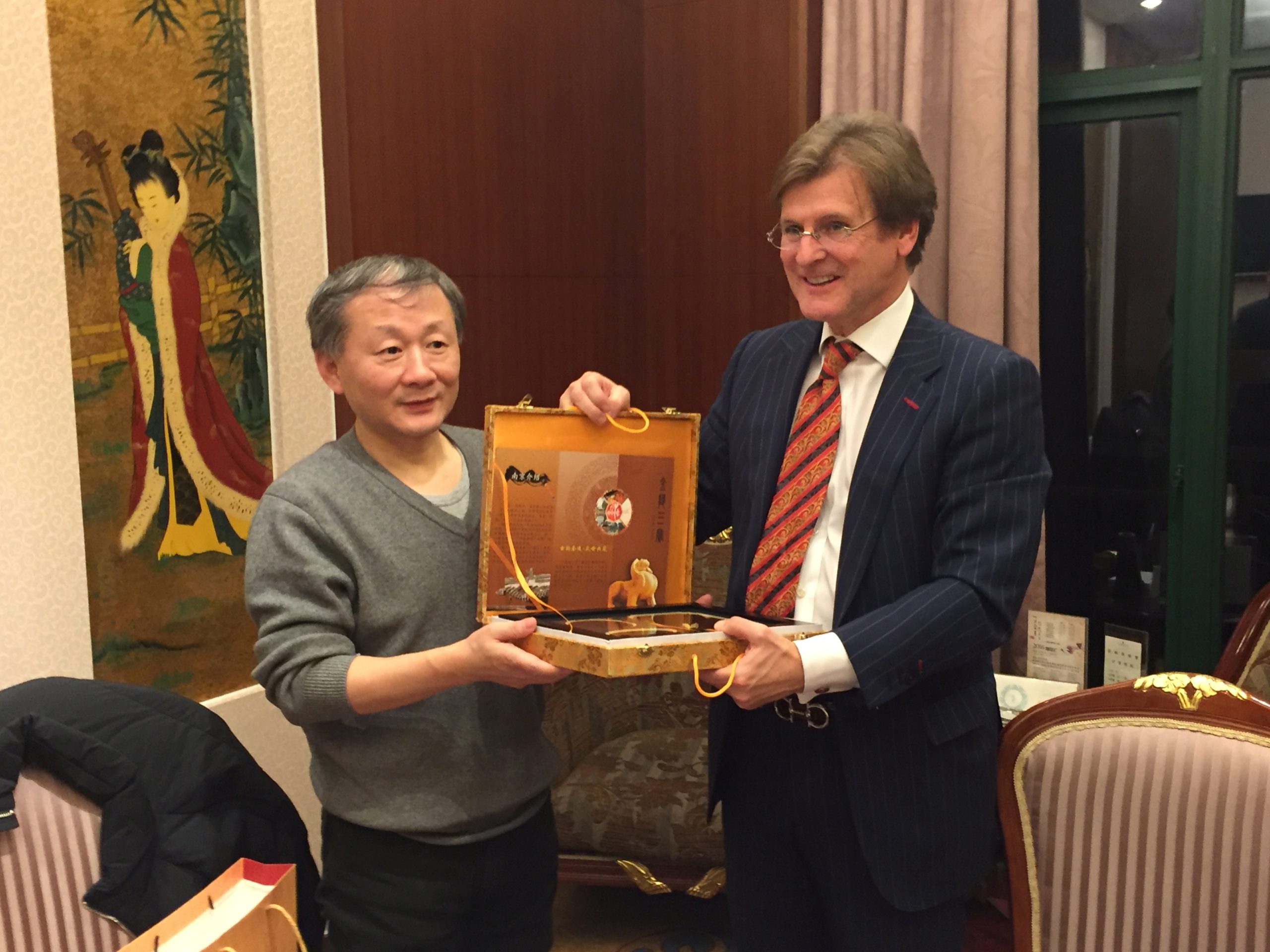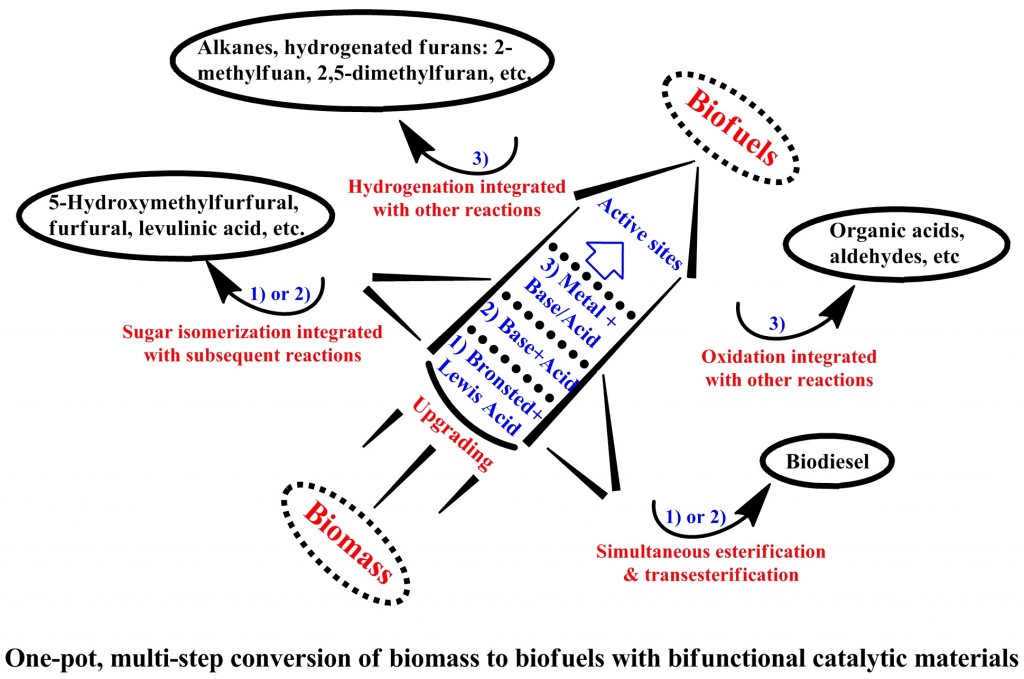Direct conversion of carbohydrates to methyl levulinate catalyzed by acid-base bifunctional zirconia-zeolites
27 1 月, 2017Direct conversion of carbohydrates to methyl levulinate catalyzed by acid-base bifunctional zirconia-zeolites 
Acid-base paired sites of ZrY hybrids with increased pore sizes are efficient for sugar isomerization and downstream reactions, while the local enhanced microwave irridation (MI) with zirconia is responsible for high sugar conversion, thus facilitating the one-pot multi-step catalytic process to produce ML in high yields (~70% from glucose).
Dr. Hu Li, a postdoctoral student, supervised by Profs. Song Yang (Guizhou university) and Zhen Fang prepared a series of metal-zeolite hybrids by impregnation and deposition-precipitation methods and charaterized with different techniques. Catalytic performance of these catalysts on microwave-assisted conversion of selected carbohydrates to the fuel component methyl levulinate (ML) in methanol was studied. It was demonstrated that metal oxide content/type and acid-base bifunctionality were closely correlated with substrate conversion and ML yield, respectively. Among various as-prepared catalysts, zirconia-zeolite hybrid ZrY6(0.5) with moderate acid-base site content (0.97 & 0.08 mmol g−1), high stability and porosity (average mesopore diameter: 6.2 nm) exhibited superior catalytic activity. At 180 ºC, around 67-73%, 78%, 53% and 27% yields of ML could be achieved from monosaccharides (e.g., glucose, mannose and galactose), sucrose, starch and cellulose, respectively. The Zr-Y6(0.5) hybrid exhibited good stability, and could be reused for five times with ML yields of > 63% from glucose.
The study was published:
H Li, Zhen Fang*, J Luo, S Yang, Direct Conversion of Biomass Components to the Biofuel Methyl Levulinate Catalyzed by Acid-Base Bifunctional Zirconia-Zeolites, Applied Catalysis B: Environmental, 200, 182–191 (2017).
—————————————————————
酸–碱双功能氧化锆-分子筛直接催化转化碳水化合物为乙酰丙酸甲酯生物燃料
石化资源的过度使用往往会造成环境污染、全球气候变暖等问题,生物质作为一种可再生的有机碳源在制备生物能源和有机化学品方面表现出极大的应用前景。近年来,乙酰丙酸甲酯作为第二代生物能源受到广泛的研究和关注,但存在反应时间长、催化体系难重复利用等不足。最近,国际著名学术期刊Applied Catalysis B: Environmental,发表了我校生物燃料一项最新研究成果,论文题为“Direct Conversion of Biomass Components to the Biofuel Methyl Levulinate Catalyzed by Acid-Base Bifunctional Zirconia-Zeolites”,第一署名单位为南京农业大学,第一作者为我校工学院博士后李虎,通讯作者为我校方真教授。
工学院农业机械系生物能源组博士后李虎在杨松教授(贵州大学)和方真教授的指导下,用浸渍法和沉积沉淀法制备了一系列金属-沸石混合物,作为催化剂,并对其化学和物理结构用不同的分析技术方法进行了测定。在甲醇中利用这些催化剂和微波照射技术,催化辅助转化生物质主要组分-碳水化合物,为乙酰丙酸甲酯燃料过程,进行了实验研究。结果表明,金属氧化物的含量/类型和酸-碱双功能,与原料的转化率和乙酰丙酸甲酯产率密切相关。在各种合成的催化剂中,氧化锆-沸石混合物ZrY6(0.5)具有适度的酸-碱含量(0.97 & 0.08 mmol g−1)、高的稳定性和高孔隙度 (平均孔直径︰6.2纳米)并表现出优越的催化活性。在 180 ºC条件下,可以分别从单糖(如葡萄糖、甘露糖、半乳糖)、蔗糖、淀粉和纤维素原料合成得到67-73%左右,78%、53%和27%的乙酰丙酸甲酯产率。Zr-Y6(0.5)型催化剂表现出良好的稳定性,可以重复使用五次,并可从葡萄糖中合成高产率(>63%)的乙酰丙酸甲酯。
详情可见:
H Li, Zhen Fang*, J Luo, S Yang, Direct Conversion of Biomass Components to the Biofuel Methyl Levulinate Catalyzed by Acid-Base Bifunctional Zirconia-Zeolites, Applied Catalysis B: Environmental, 200, 182–191 (2017).
